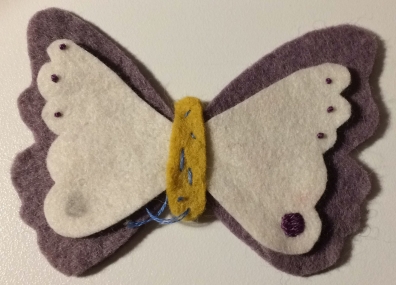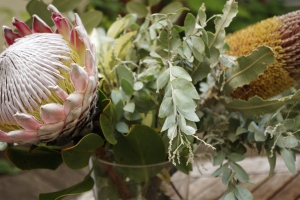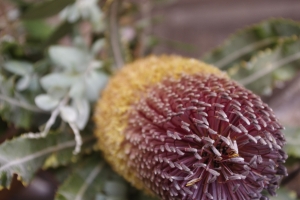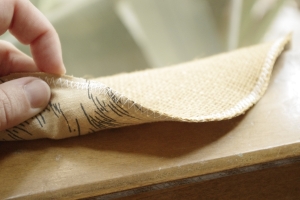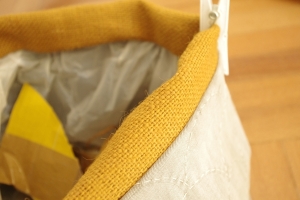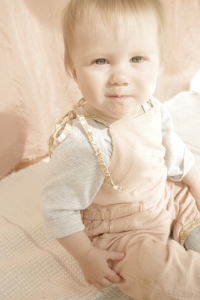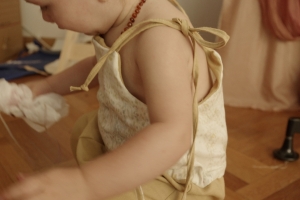Dyeing silk with plant material. yum. That sums up how I feel about it.
Lebenskünstler recently lent the book Eco Colour by India Flint and it reignited a passion of mine. When I was studying fine arts at university I worked a lot with plant and mineral colour, particularly with rust and pomegranate juice. It is a kind of mysterious alchemy, the way in which materials might be coaxed into giving forth unforeseen (or even expected) shades of colour. I always feel nourished doing a little bit of dyeing.
I had a few silk scarves on my materials shelf and I decided to try out some foraged materials. This tutorial is for a rust, blueberry and lavender silk scarf. The colours that came out in my scarf are a light grey-blue background, with rust, purple, plum and blue for most of the pattern. There are darker accents of prussian blue also.

plant dye tutorial – rust, lavender and blueberry scarf
Here is what you will need:
Silk to dye
A handful of frozen blueberries cut in half
A collection of small rusty objects. I cut triangles from a rusty metal band.
A bunch of lavender flowers (mine were dried)
Water
A copper pot or a piece of oxidised copper
A tea strainer (like those you get in glass teapots) or something you can wrap the silk around and boil (a stone or thick stick for example)
String (like jute or thick cotton string)
None of this is particular toxic (with the copper and iron, you don’t want to go drinking the water afterwards and it needs to be disposed of safely), but it is best to use a pot that isn’t for food. I used an old beat-up teapot that had copper rust inside.

old rusty teapot used for dying
Here’s how to get started:
1. Dampen your silk and lay it flat on a large surface. At the bottom edge, arrange your lavender in a line horizontally and fold silk so that it is covered over, then fold once more so that it can not so easily move. Arrange the blueberries with cut half down horizontally in the same way on the next free part of silk (not on the folded part) and fold it neatly in as well. Fold once again to secure and repeat the process with the bits of rusty stuff.

Rust triangles are in a row ready to be folded into the scarf. Note the blueberries already folded in on the bottom edge of photograph.
2. Wrap the rest of the silk around itself so that you end up with a flat-ish strip. Wrap this around your tea-strainer, stone or stick. Wrap it tightly, around and around.
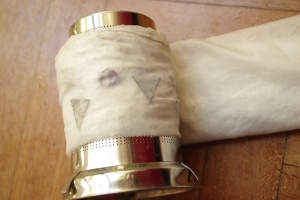
plant dye tutorial – rust, lavender and blueberry scarf
3. Tie up tightly with the cotton string to secure everything in place. (I probably should have tied it a few more times around. Surprisingly it stayed in place.)

plant dye tutorial – rust, lavender and blueberry scarf
4. Place this into your pot and add water. Boil and then simmer for 2 hours. Your kitchen will smell lovely, like lavender.
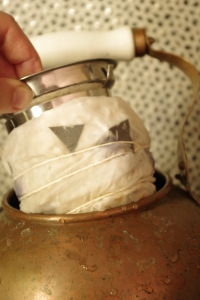
Into the pot. Plant dye tutorial – rust, lavender and blueberry scarf
5. Once it has boiled let it stand in the pot for at least 24 hours (this is by far the HARDEST part). Then carefully remove the silk without moving the parts (or you can just leave it on the stone or stick) and put it in enough water to keep it damp but that the air can oxidise the rusty metal. Leave it in this as many days as you can bear. I was totally impatient and only left it one day. It is TOTALLY worth leaving it longer, I just caved.

Allowing the rust to set. Plant dye tutorial – rust, lavender and blueberry scarf
6. Once you take it out, get rid of the rusty metal and blueberry bits and lavender flowers, rinsing the whole scarf in cold water. Iron the scarf dry and flat. Now it is ready to wear!

plant dye tutorial – rust, lavender and blueberry scarf
Just a note to say that these colours might not be as lightfast as conventional, synthetic dyes, but in my experience they are much more subtle, harmonious and even change with the seasons sometimes. You can always dye over the top if they fade too.
Enjoy!


